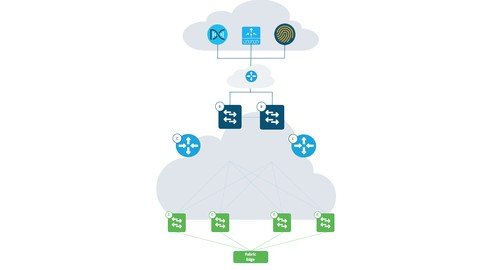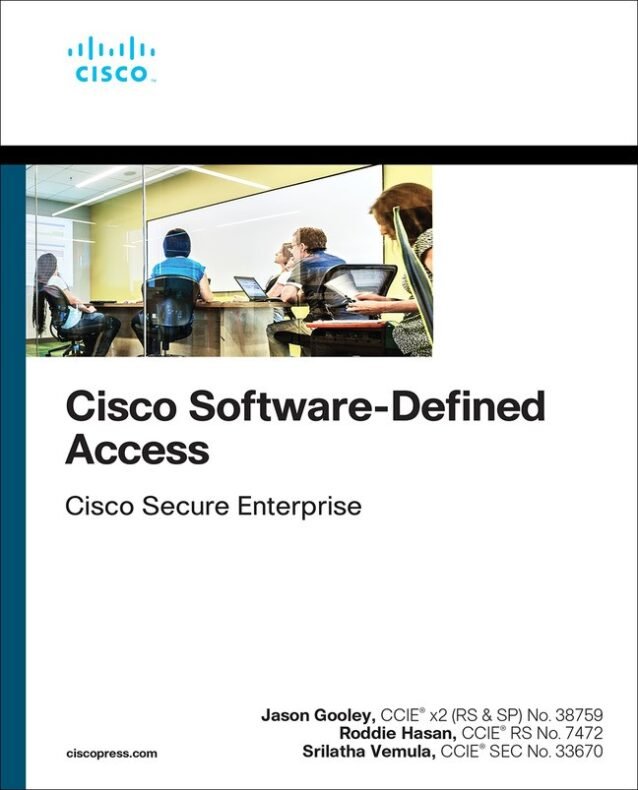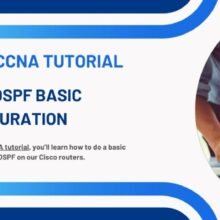Smart Phone Remote Controller ● Widespread Compatibility: Your smartphone can function effectively with the standard connector that is frequently used to replace iOS cellphones.● Plug and Play: Your smartphone may become an…
Cisco SDA “Software Defined Access” Hands-On

Cisco Software Defined Access Hands-On
What Is Software Defined Access?
The Cisco software defined access platform, which is founded on the principles of intent-based networking, assists enterprises in enabling policy-based automation from the edge to the cloud.
On-boarding, secure segmentation, IoT integration, and guest access are just a few of the essential business operations that SD-Access can manage for network architects and administrators.
SD-Access automates user and device policy for any application across the wireless and wired network via a single network fabric.
Moreover, SD-Access is a paradigm-shifting development. In just a few clicks, IT may grant network access to any user, device, or application, regardless of their location or identity.
Cisco Software-Defined Access (SDA) is a network architecture that allows for the automation of network policy management and simplifies the deployment and management of network devices.
It is built on a network fabric that leverages the latest in network hardware and software technology to provide a flexible, scalable, and secure platform for network connectivity.
SDA uses a centralized policy engine to automate the configuration of network devices, making it easier to manage the network and reduce the risk of configuration errors.
The SDA architecture is designed to address the challenges of today’s digital workplace, where users expect seamless and secure access to network resources from any location and on any device.
SDA enables the creation of a unified network fabric that can span multiple locations and support a variety of devices, including IoT devices, BYOD devices, and cloud resources.
With SDA, IT teams can create policies that are based on user roles rather than network locations, making it easier to manage the network and ensure that users have the right access to the resources they need.
Overall, Cisco SDA is an innovative network architecture that provides IT teams with the tools they need to manage network policy in a more automated and efficient manner, while also improving security and enabling greater agility in the digital workplace.
Where cam i learn it ?
Cisco Software Defined Access Hands On, will take you step by step on how to build Cisco Fabric “SD-Access” which explains in details on how build the Fabric Underlay, Overlay, Cisco ISE with DNAC integration, building Fabric wireless for employee and Guest, build virtual network, apply SGT.
[ufwp id=”2675740″]
It will briefly explain all the SD-Access and Fabric from A to Z. Fabric Edge, Control Plane, Border, Fabric WLC, ISE, DNAC, Underlay, Overlay, LISP, VXLAN, TrustSec, Packet Flow, Virtual Network, VRF, Scalable Group – SGT, AnyCast Gateway, Assurance Analytics
What are the benefits of Cisco software defined Access?
- End-to-end segmentation. Help secure your organization and achieve regulatory compliance with end-to-end segmentation. Keep user, device, and application traffic separate without redesigning the network.
- Improved workforce experience. Automate user access policy. Apply the right policies for users or devices to any application across the network.
- Operational effectiveness. Facilitate a consistent user experience anywhere, without compromise, with a single network fabric.
- Business insights. Bring outdoor, rugged, and industrial IoT endpoints into the IT fold. Expand your business beyond traditional networks.
[ufwp id=”2675740″]

Cisco Software-Defined Access
This comprehensive book guides you through all aspects of planning, implementing, and operating Cisco Software-Defined Access (SD-Access). Through practical use cases, youll learn how to use intent-based networking, Cisco ISE, and Cisco DNA Center to improve any campus networks security and simplify its management.
Agile project management Artificial Intelligence aws blockchain cloud computing coding interview coding interviews Collaboration Coursera css cybersecurity cyber threats data analysis data breaches data science data visualization devops django docker excel flask hacking html It Certification java javascript ketan kk Kubernetes machine learning mongoDB Network & Security network protocol nodejs online courses online learning Operating Systems Other It & Software pen testing python Software Engineering Terraform Udemy courses VLAN web development
[ufwp search=”Software Defined Access” items=”3″ template=”grid” grid=”3″]
https://in.pinterest.com/itexamtools/






